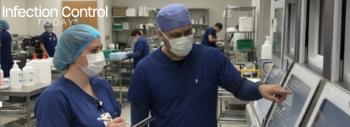
CHG-Coated Surgical Gloves Influence the Bacterial Flora of Hands Over a Period of 3 Hours
The risk of SSI increases in the presence of foreign materials and may be caused by organisms with low pathogenicity, such as skin flora derived from hands of surgical team members in the event of a glove breach. Previously,
The experimental procedure followed the method for assessment of the 3-hour effects of a surgical hand rub’s efficacy to reduce the release of hand flora as described in the European Norm EN 12791. Healthy volunteers tested either an antimicrobial surgical glove or non-antimicrobial surgical latex gloves in a standardized laboratory-based experiment over a wear time of 3 hours.
Wearing antimicrobial surgical glove after a surgical hand rub with 60% (v/v) n-propanol resulted in the highest 3-hour reduction factor of 2.67 log10. Non-antimicrobial surgical gloves demonstrated significantly lower (p â¤â0.01) 3-hour reduction factors at 1.96 log10 and 1.68 log10, respectively. Antibacterial surgical gloves are able to maintain a sustainable bacterial reduction on finger tips in a magnitude of almost 3 log10 (log10 2.67 cfu) over 3 hours of wear time.
The researchers conclude that the study demonstrated that wear of an antibacterial surgical glove coated with chlorhexidine-digluconate is able to suppress resident hand flora significantly over a period of 3 hours.
Reference: Suchomel M, et al. Chlorhexidine-coated surgical gloves influence the bacterial flora of hands over a period of 3 hours. Antimicrobial Resistance & Infection Control.2018;7:108
Newsletter
Stay prepared and protected with Infection Control Today's newsletter, delivering essential updates, best practices, and expert insights for infection preventionists.





